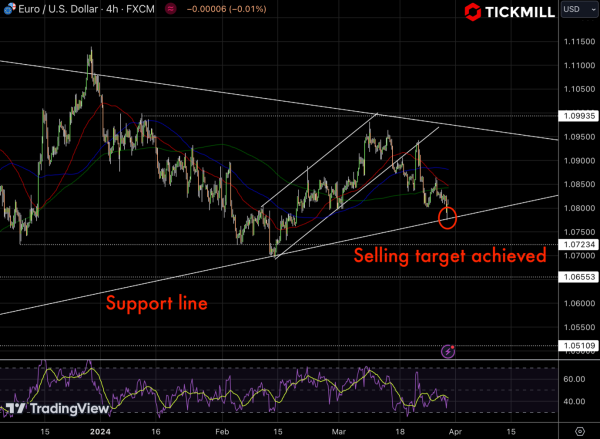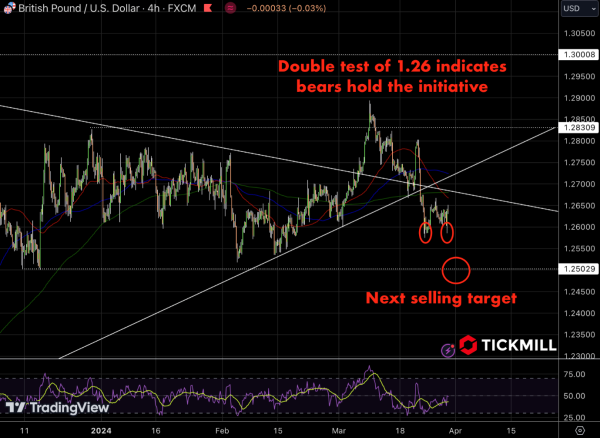King Dollar Reclaims Throne as Fed Board Member Douses Rate Cut Speculations
The US Dollar has emerged as the undisputed monarch once again, buoyed by a confluence of factors sending ripples across the financial landscape. Fed Board Member Christopher Waller's decisive stance against a June interest-rate cut spurred bids on USD on rumors that interest rates will stay higher longer than expected. As the market braces for fewer and later rate cuts amidst a backdrop of economic resurgence and burgeoning inflation, the USD rallies, signaling a shift in the tides of monetary policy sentiment.
The resurgent USD is not merely a speculative phenomenon but is underpinned by robust economic indicators. Initial Jobless Claims in the US witnessed a modest decline, indicating sustained labor market resilience. The latest figures from the US Department of Labor depict a decrease of 2,000 claims in the week ending March 23, outperforming market expectations and underscoring the economy's underlying strength.
Echoing this sentiment, the US Bureau of Economic Analysis reported a growth rate of 3.4% in the fourth-quarter GDP, surpassing earlier estimates. Upward revisions in consumer spending and nonresidential fixed investment propelled the expansion, offsetting a slight downturn in private inventory investment.
The US Dollar Index (DXY) surged following the Fed's Waller's repudiation of June rate cut expectations. Bullish momentum has propelled the DXY to fresh highs for March, edging closer to February's peaks. Anticipation looms over the crucial piece of US data, PCE report, with expectations of another surge in inflation. A red-hot inflation label could catapult the DXY beyond the 105.00 mark, underscoring the market's recalibration towards a more hawkish stance.
In stark contrast, the Euro falters amidst lingering concerns over the health of Europe's largest economy. Disappointing German Retail Sales data exacerbated worries, triggering a sell-off in the EUR/USD pair. The unexpected 2.7% year-on-year decline in Retail Sales, coupled with a month-on-month decrease of 1.9%, underscores the risks of a slack in the key driver of the German economy; consumption. The growing divergence of monetary policy stances between the ECB and the Fed exacerbates EUR weakness, with the former signaling rate cuts while the latter adopts a more cautious approach.
The technical picture of EURUSD shows that the key short-term selling target, which was discussed in our previous analysis, has been achieved and the pair may be ready for a bullish pullback:

GBPUSD dipped to 1.26 during the late Asian session but erased gains later, reflecting a broader struggle for direction in the GBP/USD pair. Investors are eagerly awaiting signals from the Bank of England regarding potential interest rate cuts. Despite a significant decrease in the United Kingdom's inflation, BoE policymakers are expected to proceed cautiously, wary of reigniting price pressures with premature rate adjustments.
Anticipation is mounting for rate reductions to commence as early as the June meeting, fueled by February's marked inflation downturn. Moreover, unanimous sentiment among BoE policymakers suggests a lack of appetite for further rate hikes, signaling that current interest rates are adequately restrictive. The UK Office for National Statistics published its revised Gross Domestic Product estimates for Q4 2023 on Thursday, affirming a 0.3% contraction in the economy during the October-December period.
The technical chart for GBPUSD indicates that the price has tested the 1.26 level twice without encountering substantial resistance from buyers. This suggests that selling pressure is poised to resume, potentially driving the pair towards a reversal point around 1.25:
